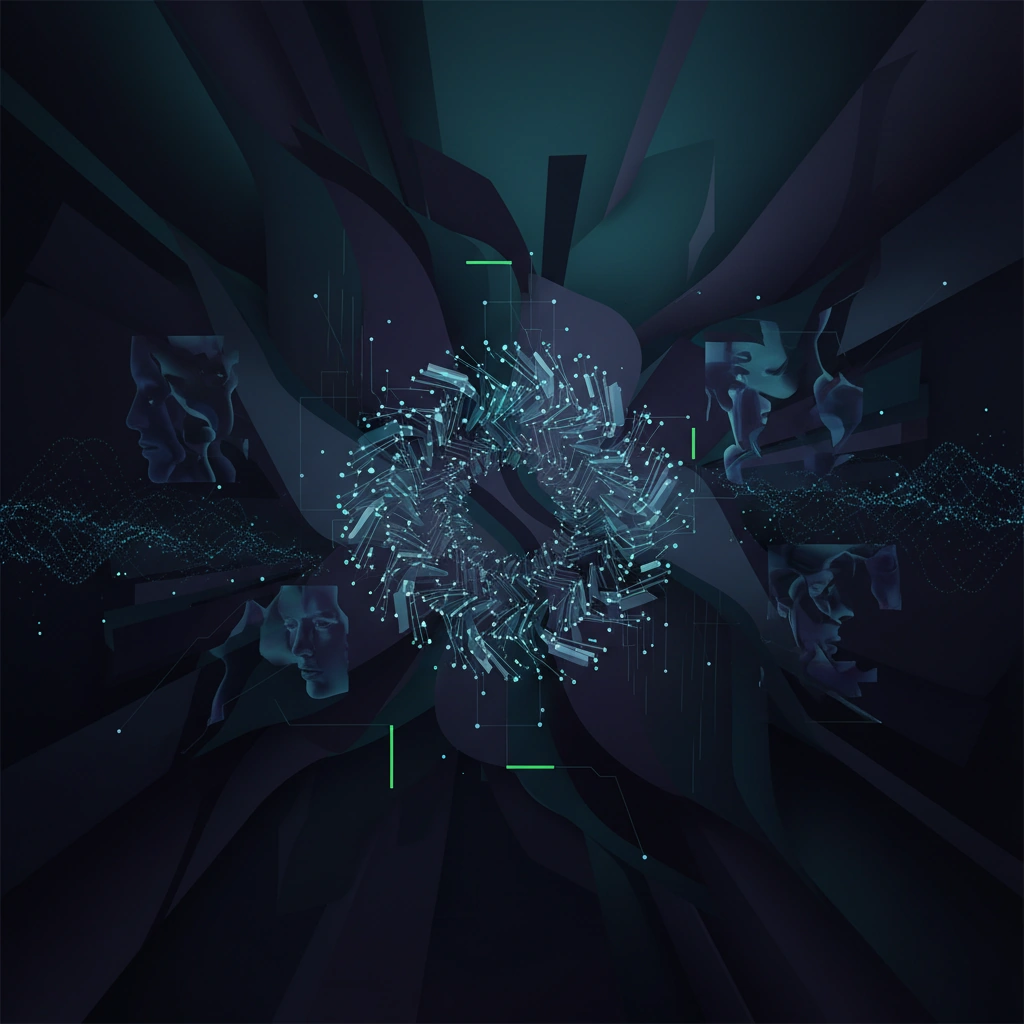Understanding Generative AI Model Families and Architectures
A technical deep dive into the major families of generative AI models—from GANs and VAEs to diffusion models and transformers—that power today's synthetic media, deepfakes, and AI video generation tools.

Understanding the technical foundations of generative AI is essential for anyone working with or analyzing synthetic media, deepfakes, and AI-generated content. This comprehensive guide breaks down the major families of generative models that power today's most sophisticated content creation tools.
Generative Adversarial Networks (GANs)
GANs revolutionized synthetic media when Ian Goodfellow introduced them in 2014. The architecture consists of two neural networks—a generator and a discriminator—locked in an adversarial competition. The generator creates synthetic samples while the discriminator attempts to distinguish real from fake, with both networks improving through this competitive process.
This architecture proved particularly effective for face generation and manipulation, forming the technical backbone of early deepfake technology. StyleGAN and its successors pushed GAN capabilities further, enabling unprecedented control over facial attributes and expressions. The discriminator's ability to provide detailed feedback on what makes images look fake became crucial for generating photorealistic synthetic faces.
However, GANs face challenges including training instability and mode collapse, where the generator produces limited variety in outputs. These limitations have implications for deepfake detection—certain GAN artifacts can serve as forensic markers for identifying synthetic content.
Variational Autoencoders (VAEs)
VAEs take a different approach to generation through probabilistic modeling. Unlike GANs' adversarial training, VAEs use an encoder-decoder architecture with a latent space constrained to follow a known probability distribution, typically a Gaussian.
The encoder compresses input data into a latent representation, while the decoder reconstructs the original input from this compressed form. By sampling from the latent space, VAEs generate new content with similar statistical properties to the training data. This architecture provides more stable training than GANs and enables smooth interpolation between different outputs.
For video synthesis applications, VAEs excel at learning compact representations of complex data. They've been integrated into video compression systems and frame prediction models, though they typically produce slightly blurrier outputs compared to GANs—a tradeoff between training stability and output sharpness.
Diffusion Models
Diffusion models have emerged as the dominant architecture for state-of-the-art image and video generation. These models work by gradually adding noise to training data, then learning to reverse this process—essentially teaching the network to denoise data back to its original form.
During generation, diffusion models start with pure noise and iteratively refine it into coherent outputs through hundreds of denoising steps. This approach yields several advantages: exceptional output quality, stable training dynamics, and the ability to condition generation on text prompts or other inputs.
Models like Stable Diffusion and DALL-E leverage this architecture for text-to-image generation, while recent advances like Runway's Gen-2 and Pika extend diffusion techniques to video synthesis. The iterative refinement process allows for precise control over output characteristics, making diffusion models particularly powerful for directed content creation.
From a digital authenticity perspective, diffusion models present unique detection challenges. Their iterative generation process produces fewer consistent artifacts compared to GANs, requiring more sophisticated forensic techniques to identify synthetic content.
Transformer-Based Generative Models
While originally designed for natural language processing, transformer architectures have proven remarkably effective for generative tasks across multiple modalities. Their attention mechanism enables modeling of long-range dependencies—critical for maintaining coherence in extended sequences.
GPT models demonstrate transformers' generative capabilities for text, while Vision Transformers (ViT) and models like DALL-E 2 apply similar principles to images. For video generation, transformers excel at maintaining temporal consistency across frames, addressing one of the key challenges in synthetic video creation.
Recent multimodal models combine transformer architectures with diffusion processes, leveraging transformers' ability to understand and process text prompts while using diffusion for high-quality visual generation. This hybrid approach powers many contemporary text-to-video systems.
Implications for Synthetic Media
Each model family brings distinct characteristics to synthetic media creation. GANs offer rapid generation but with potential artifacts. VAEs provide stable training and smooth interpolations. Diffusion models achieve superior quality at the cost of computational intensity. Transformers excel at understanding context and maintaining consistency.
Understanding these architectural differences is crucial for both creators and analysts. Content authenticators must recognize model-specific artifacts and generation patterns. Developers choosing architectures must balance quality, speed, controllability, and computational requirements based on their specific applications.
As these model families continue evolving and hybridizing, the line between real and synthetic content grows increasingly blurred. Technical literacy in these foundational architectures becomes essential for navigating the synthetic media landscape—whether creating, detecting, or simply understanding AI-generated content.
Stay informed on AI video and digital authenticity. Follow Skrew AI News.



